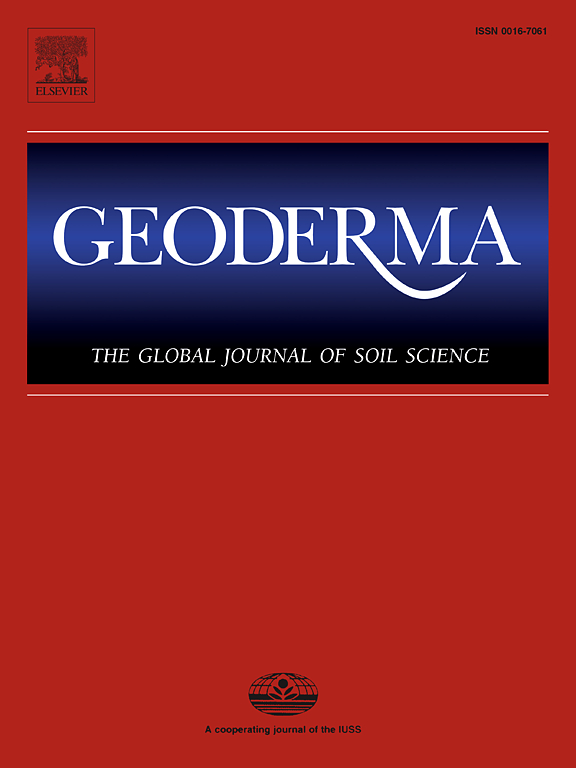控制西南喀斯特地区土壤团聚体稳定性的环境变量
IF 5.6
1区 农林科学
Q1 SOIL SCIENCE
引用次数: 0
摘要
土壤团聚体稳定性(SAS)信息对于评估生态系统服务和扩大土壤侵蚀模型至关重要。在特定的空间尺度上,环境因子(如土壤性质、地形和气候)对SAS的全球贡献被广泛记录。然而,对这些因素的规模和地点特定控制知之甚少。本文利用2238个表层土壤(0-0.2 m)样品和24个环境因子,对中国西南喀斯特地区(43,700 km2)不同空间尺度和地点的SAS变异进行了量化。结果表明,SAS的变化以大尺度(20 km)为主,其次是中尺度(10 km)和小尺度(2 km)。地形变量,即坡度、高程和平面曲率是控制小尺度SAS变化的关键决定因素。土壤有机质和降水是影响中尺度SAS变异的关键驱动因素。降水和阳离子交换量是控制大尺度SAS变化的主要因素。其中,坡度对南方小尺度SAS变化的影响主要为负向,对北方小尺度SAS变化的影响主要为正向。在中等尺度下,土壤有机质总体上对SAS有正向影响。在大尺度上,降水的主要影响在研究区的最北端和其余区域之间通常是不同的。这些结果揭示了在数字土壤制图和基于区域的土壤管理设计中应考虑的特定尺度和特定位置的环境因子对SAS的控制。本文章由计算机程序翻译,如有差异,请以英文原文为准。
Environmental variables controlling soil aggregate stability across spatial scales and locations in a karst region of southwestern China
Information on soil aggregate stability (SAS) is essential for assessing ecosystem services and scaling up soil erosion models. The global contributions of environmental factors (e.g., soil properties, topography, and climate) on SAS at a specific spatial scale are extensively documented. However, the scale- and location-specific controls of these factors are poorly understood. Here, using 2,238 topsoil (0–0.2 m) samples and 24 environmental factors, we quantified SAS variability across different spatial scales and locations in a karst region (43,700 km2) of southwestern China. We found SAS varied mainly at large scale (20 km) followed by medium scale (10 km) and small scale (2 km). Topographic variables, namely, slope, elevation, and plan curvature were key determinants of controlling SAS variability at small scale. Soil organic matter and precipitation were critical drivers affecting SAS variability at medium scale. Precipitation and cation exchange capacity were main factors controlling SAS variability at large scale. Specifically, slope primarily exhibited a negative influence on small-scale SAS variability in the southern region, and a positive effect in the northern region. At medium scale, soil organic matter generally exerted positive effects on SAS. At large scale, the primary influence of precipitation typically differs between the northernmost part and remaining region of the study area. These results reveal the scale- and location-specific controls of environmental factors on SAS that should be considered for digital soil mapping and designing region-based soil management.
求助全文
通过发布文献求助,成功后即可免费获取论文全文。
去求助
来源期刊

Geoderma
农林科学-土壤科学
CiteScore
11.80
自引率
6.60%
发文量
597
审稿时长
58 days
期刊介绍:
Geoderma - the global journal of soil science - welcomes authors, readers and soil research from all parts of the world, encourages worldwide soil studies, and embraces all aspects of soil science and its associated pedagogy. The journal particularly welcomes interdisciplinary work focusing on dynamic soil processes and functions across space and time.
 求助内容:
求助内容: 应助结果提醒方式:
应助结果提醒方式:


